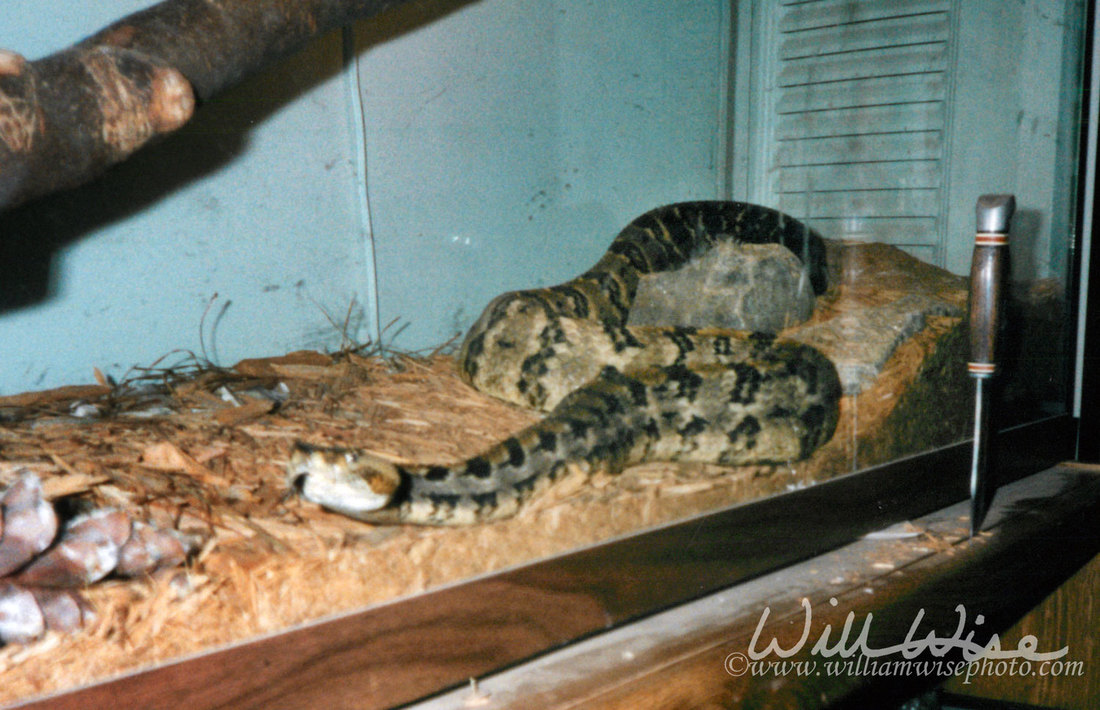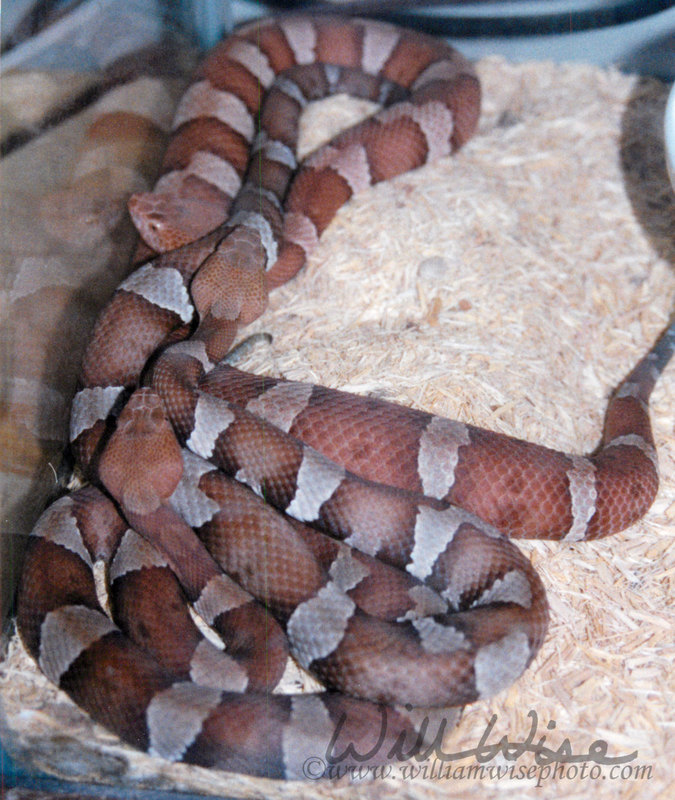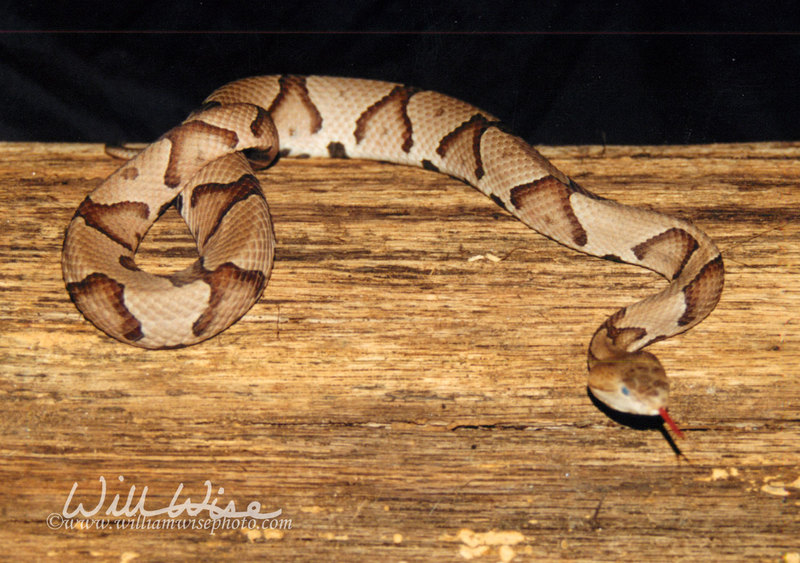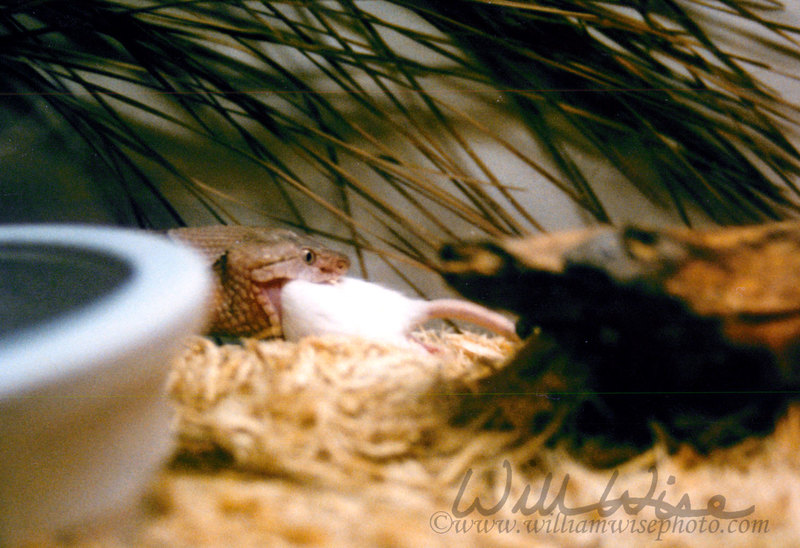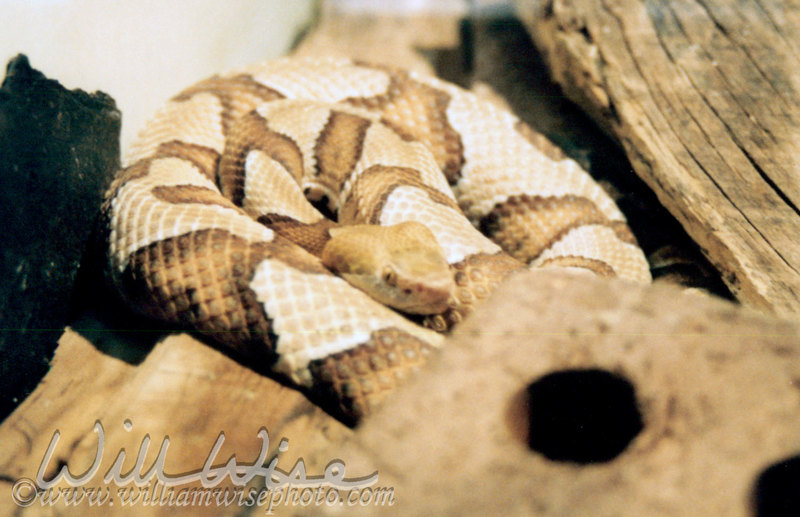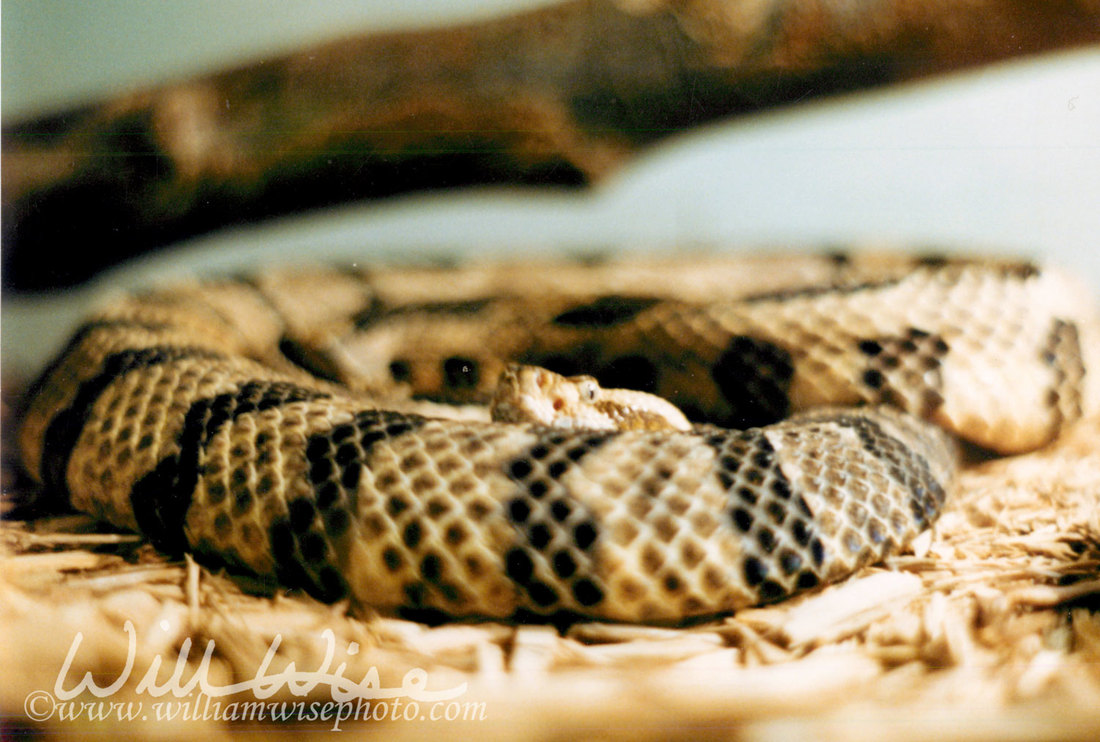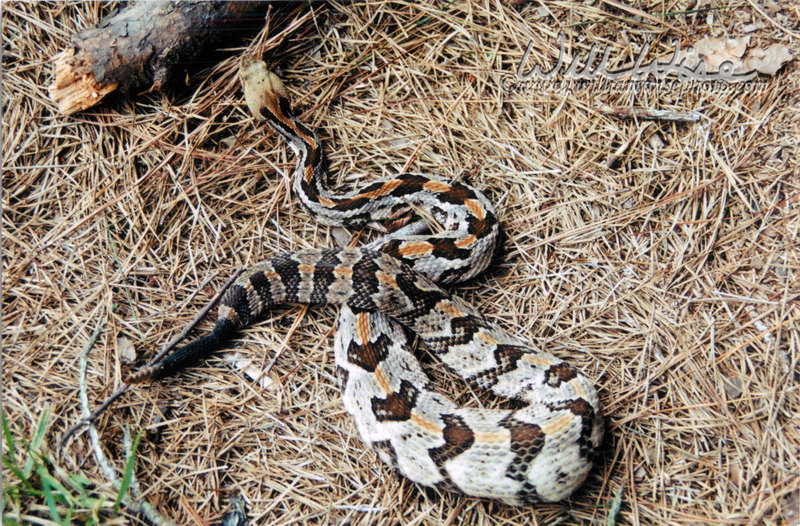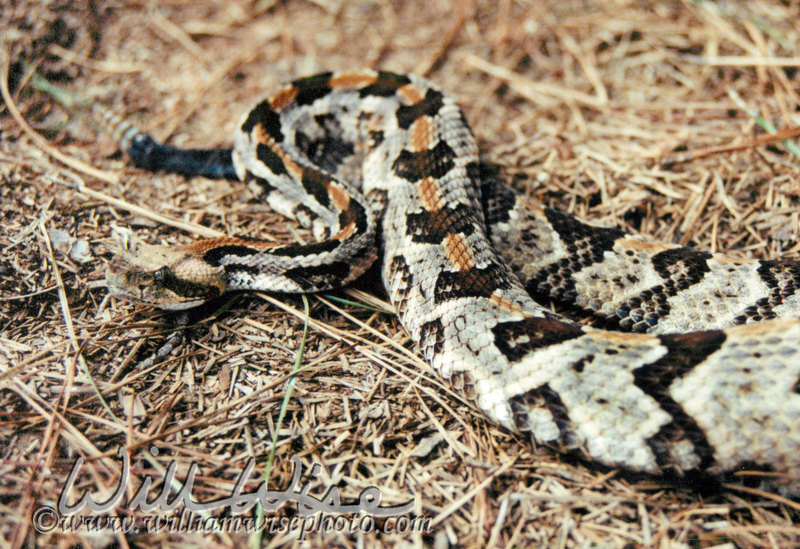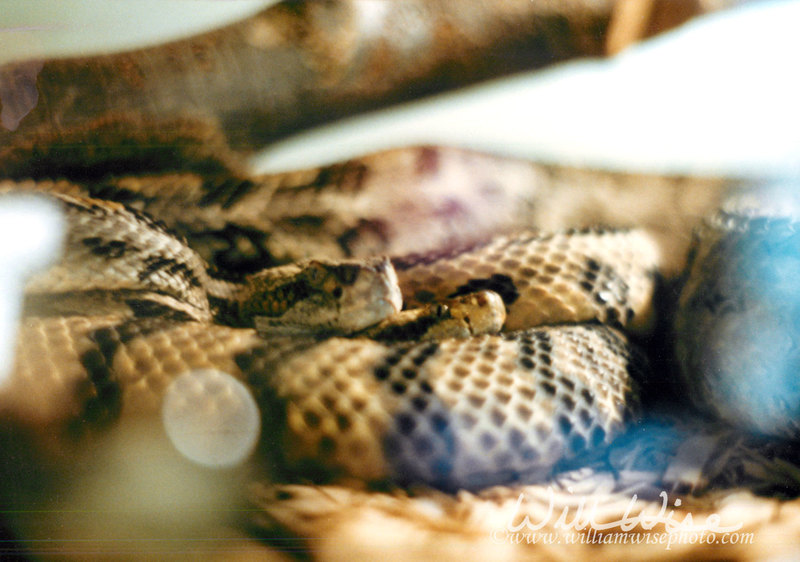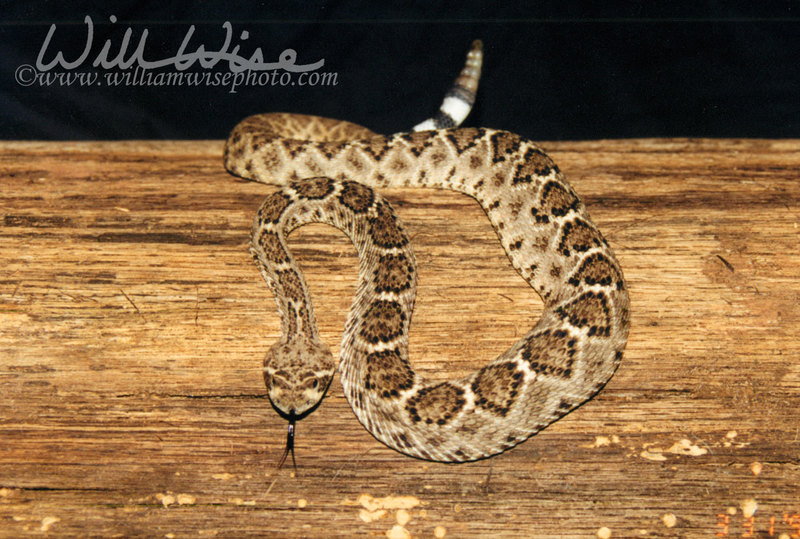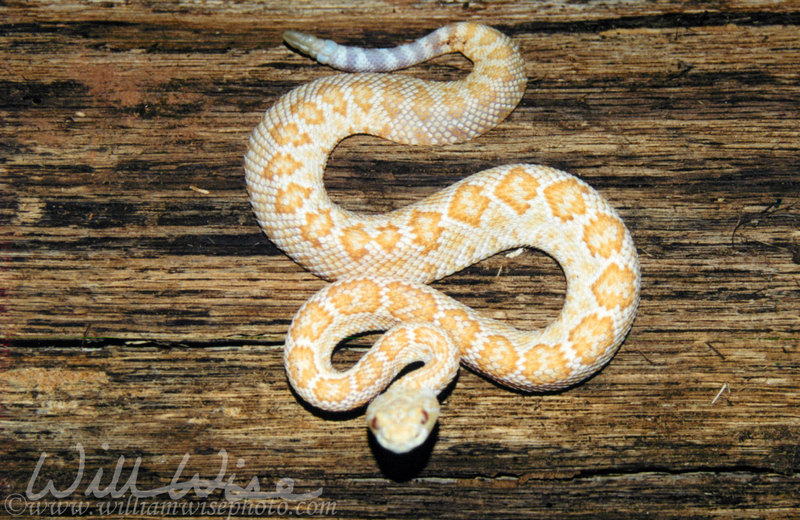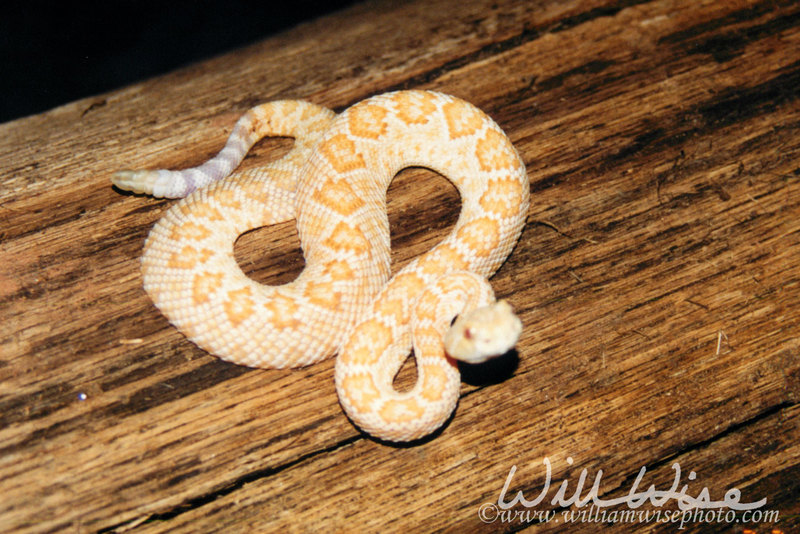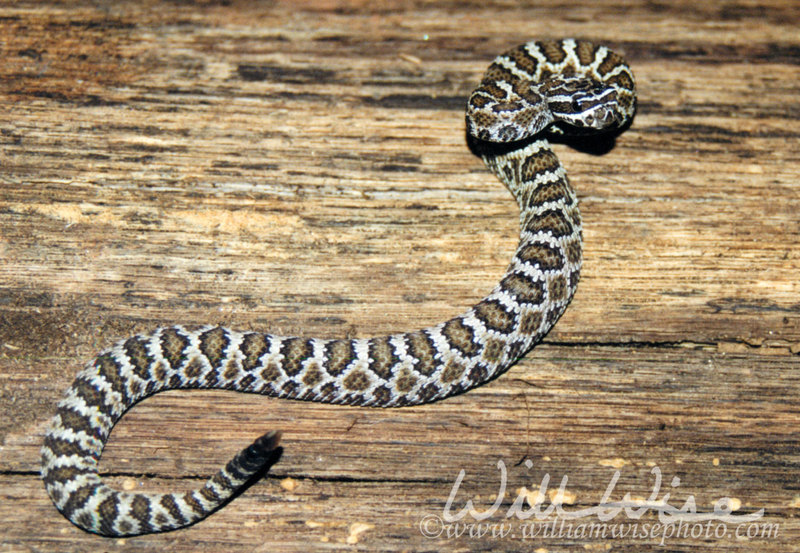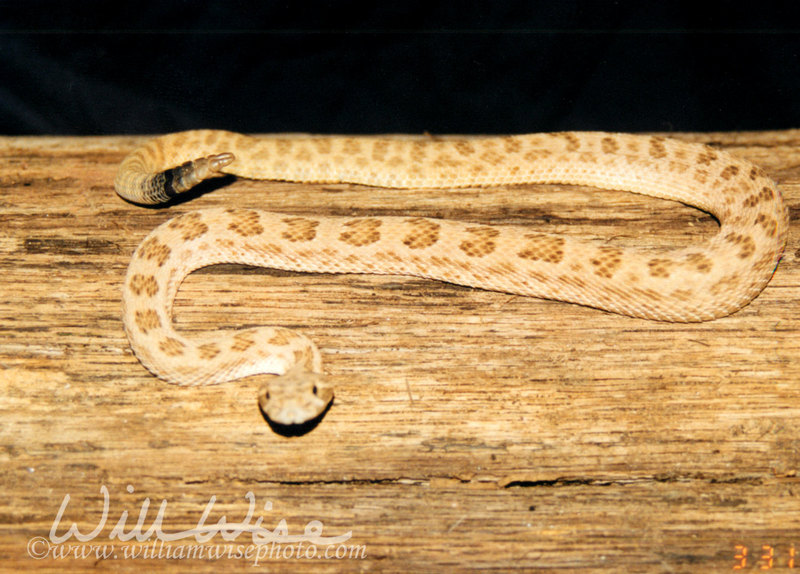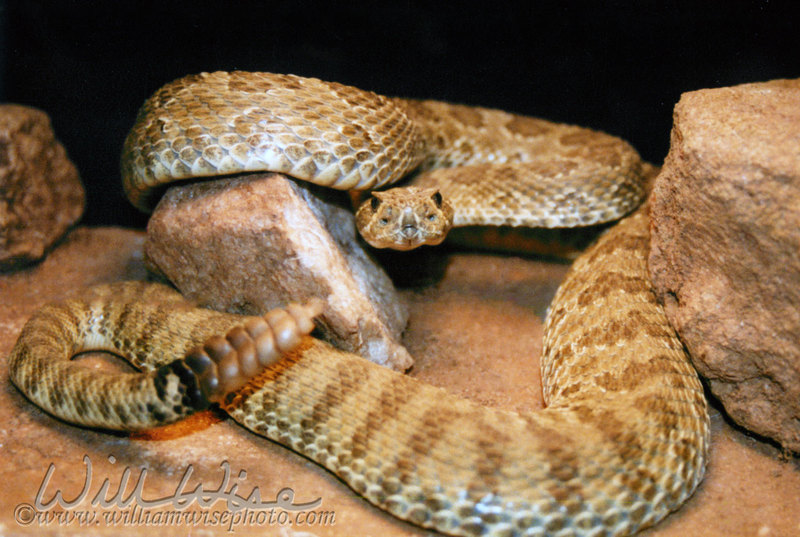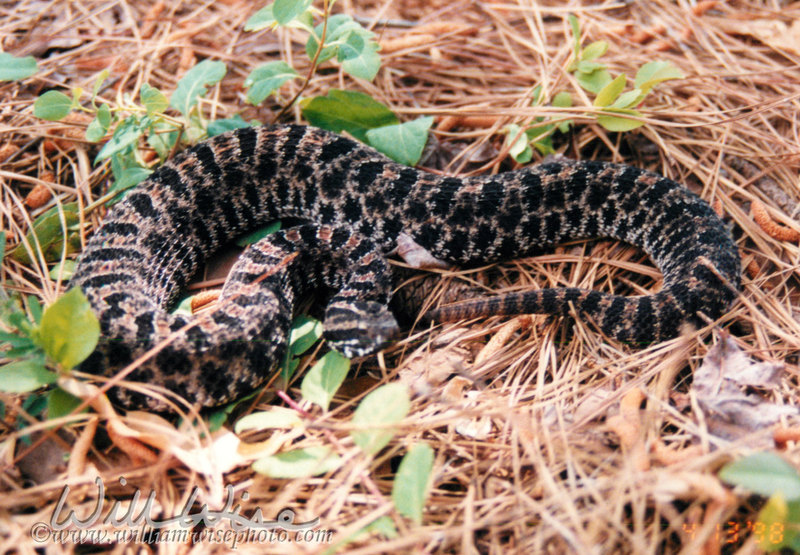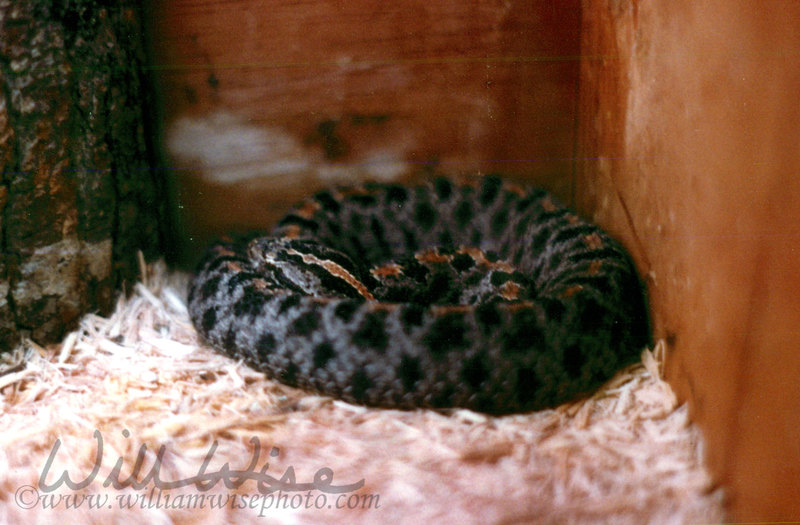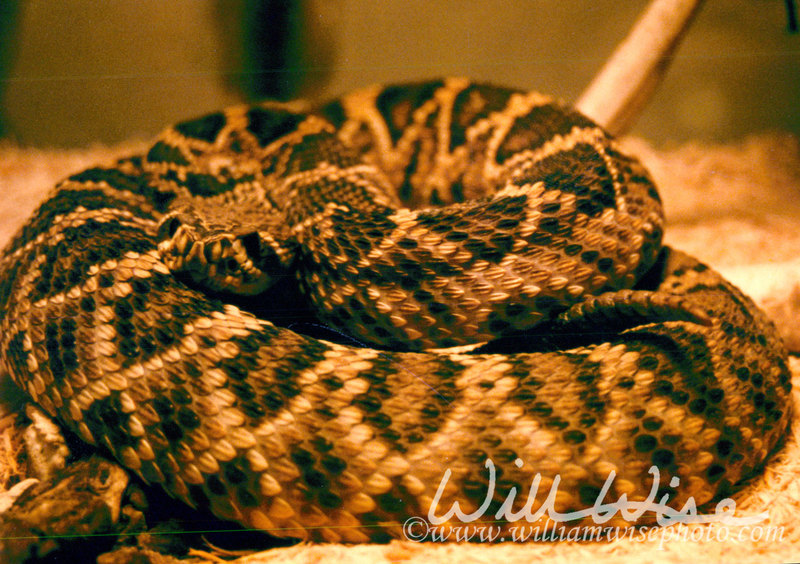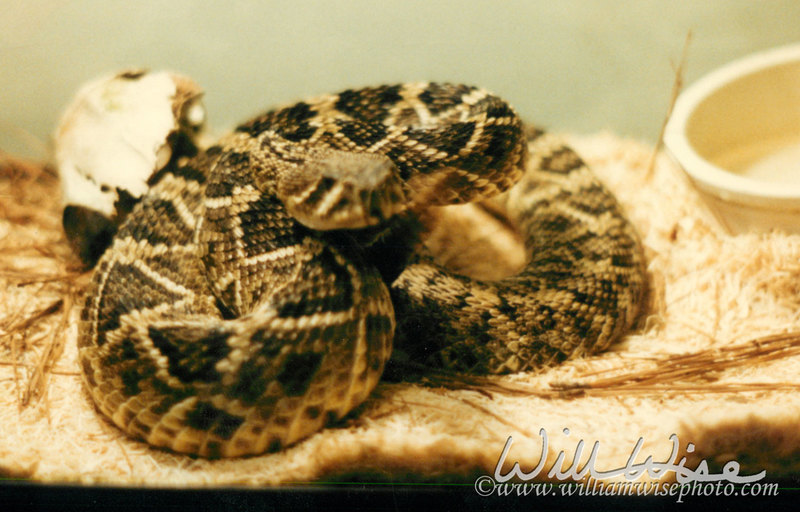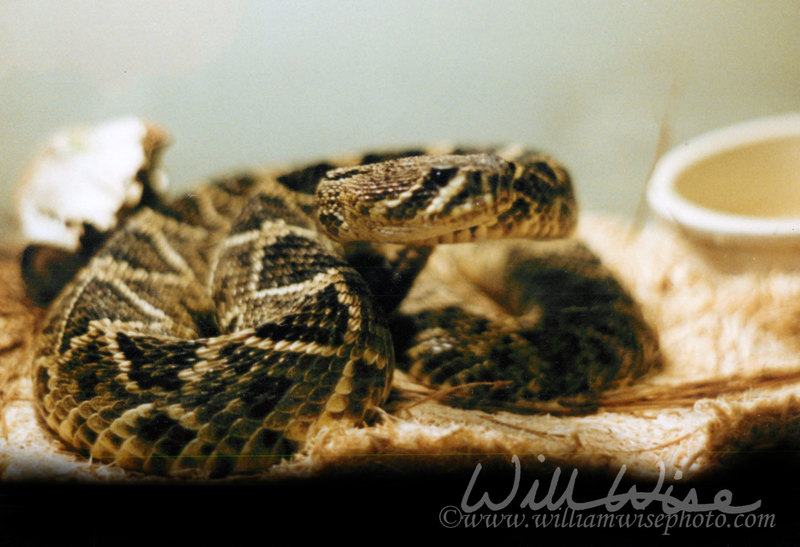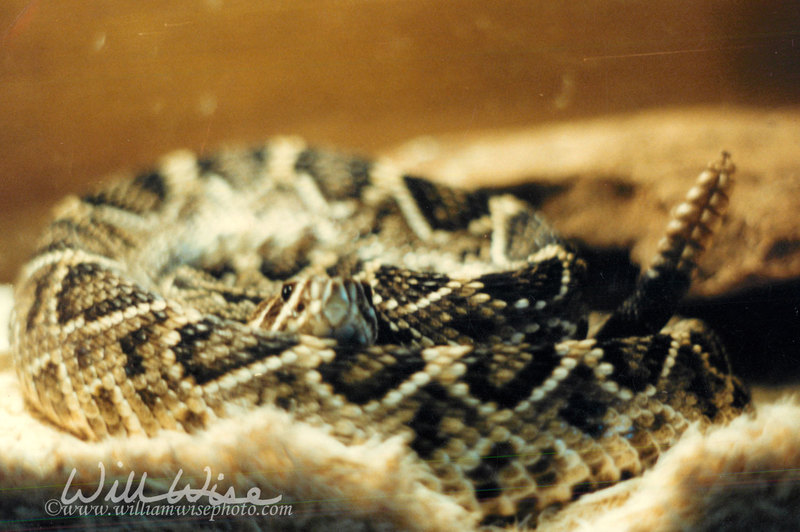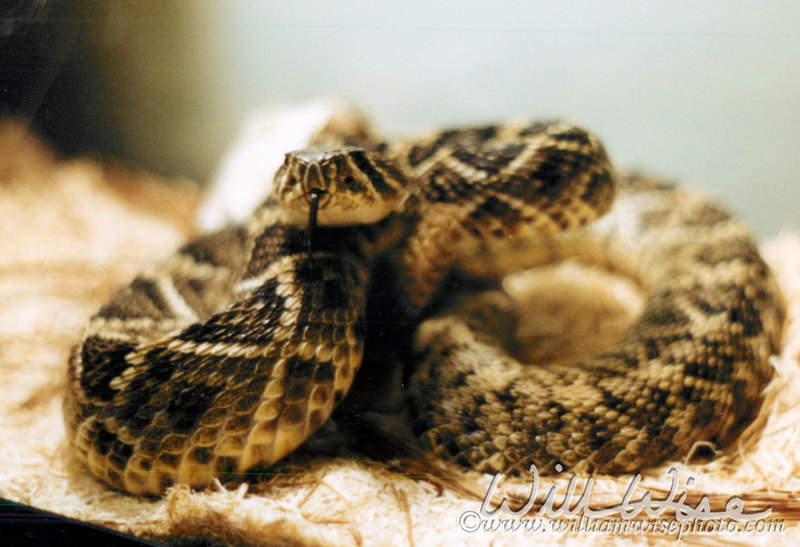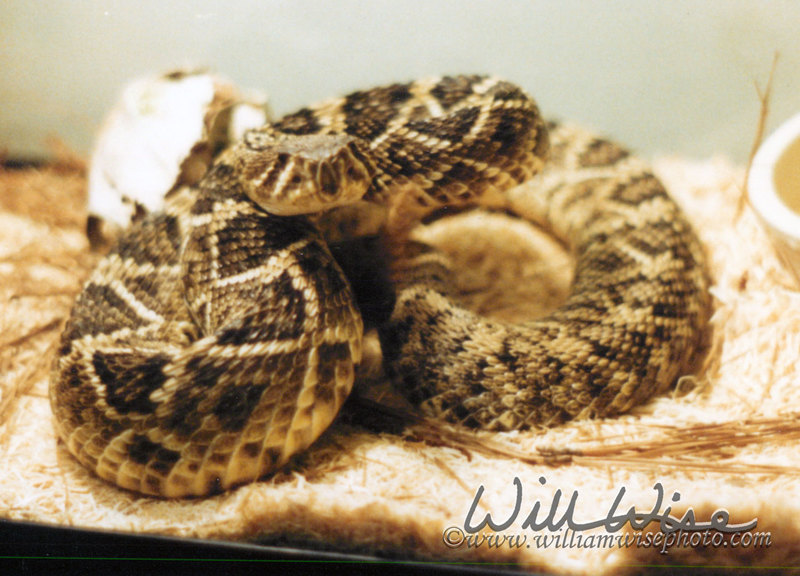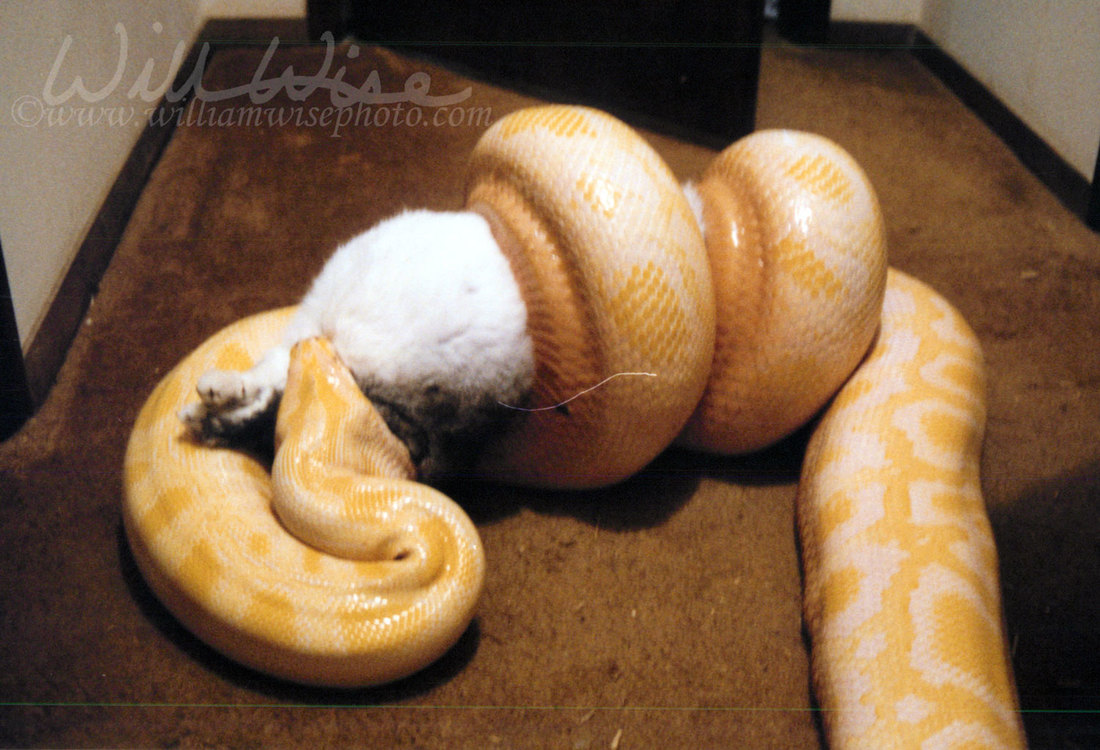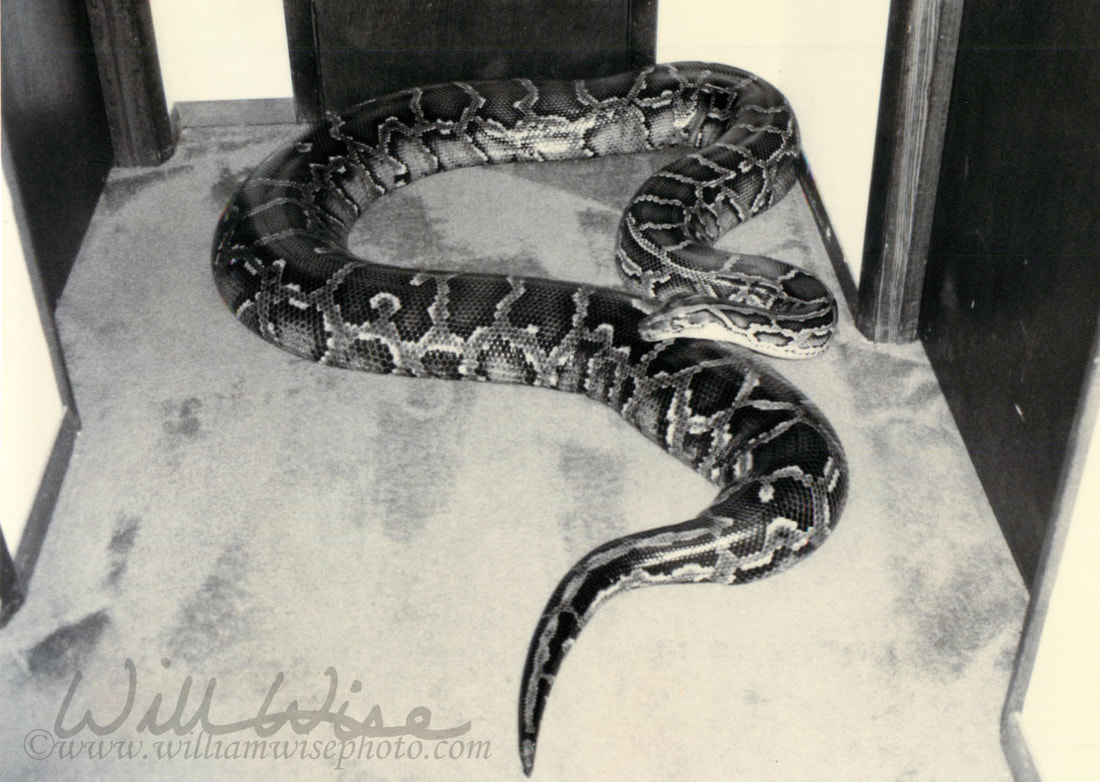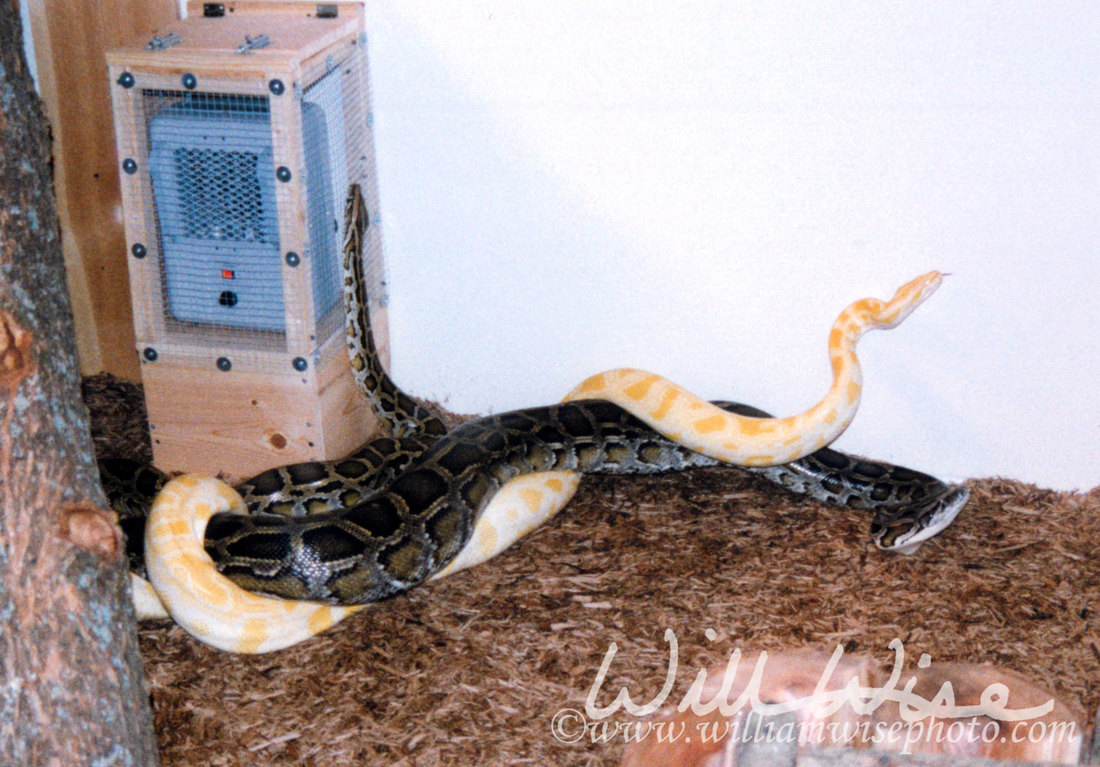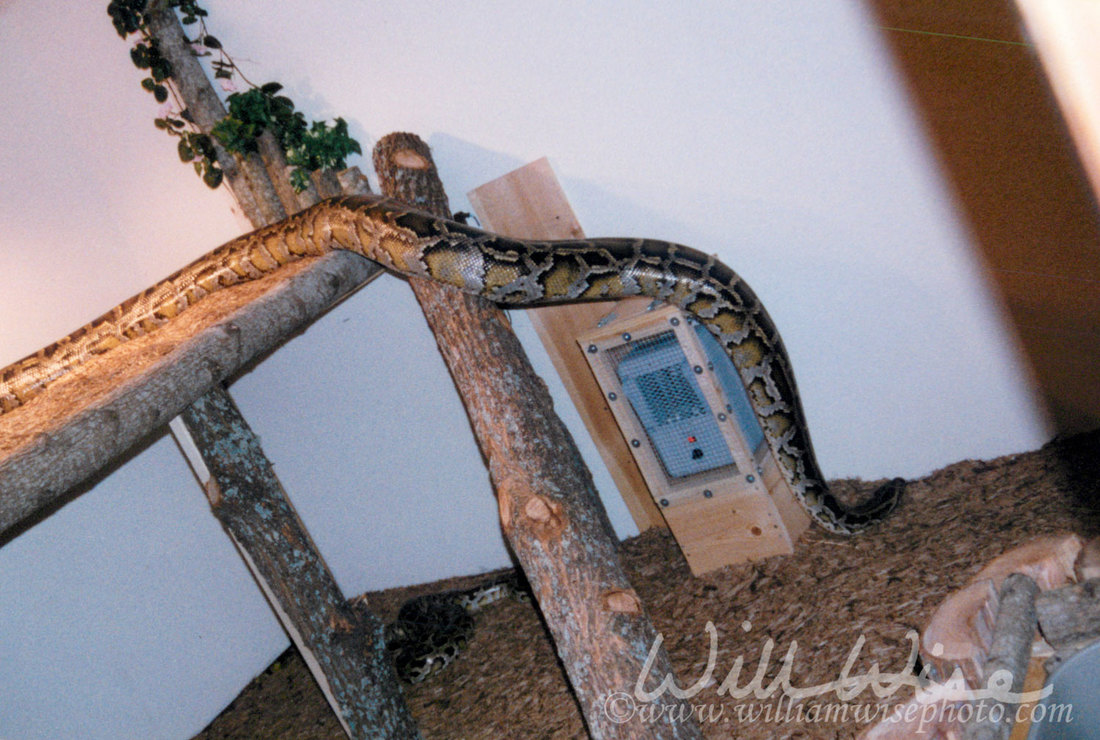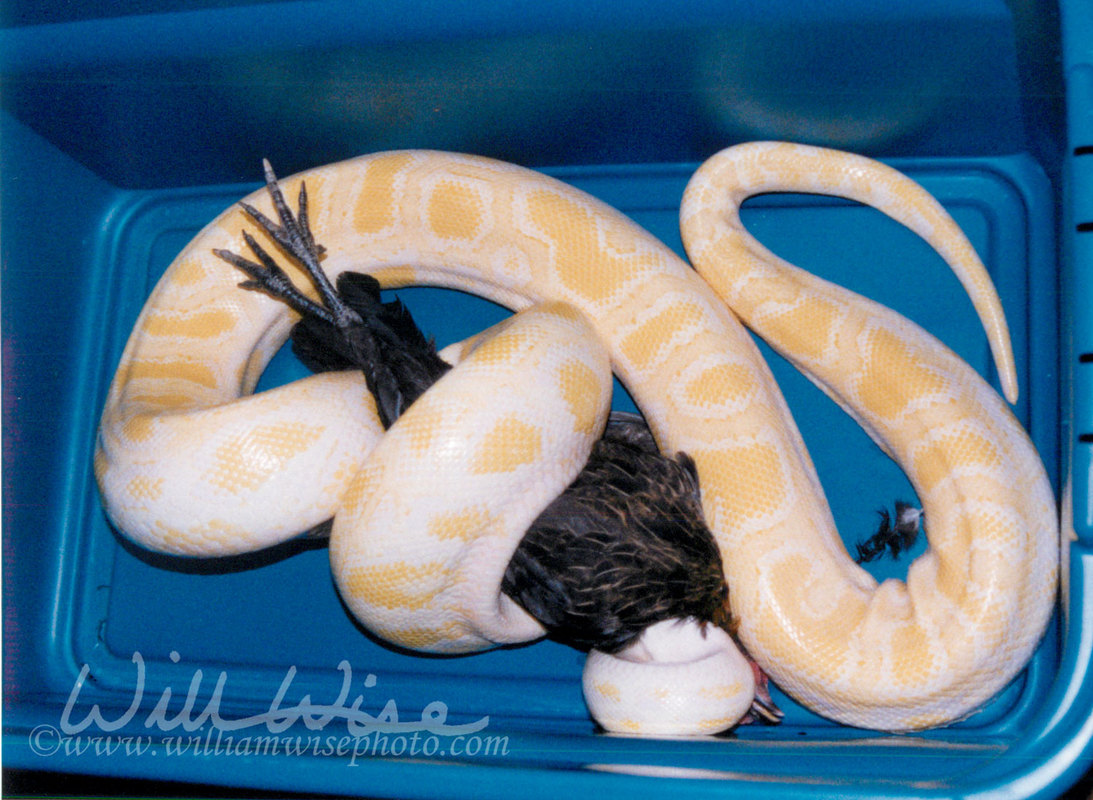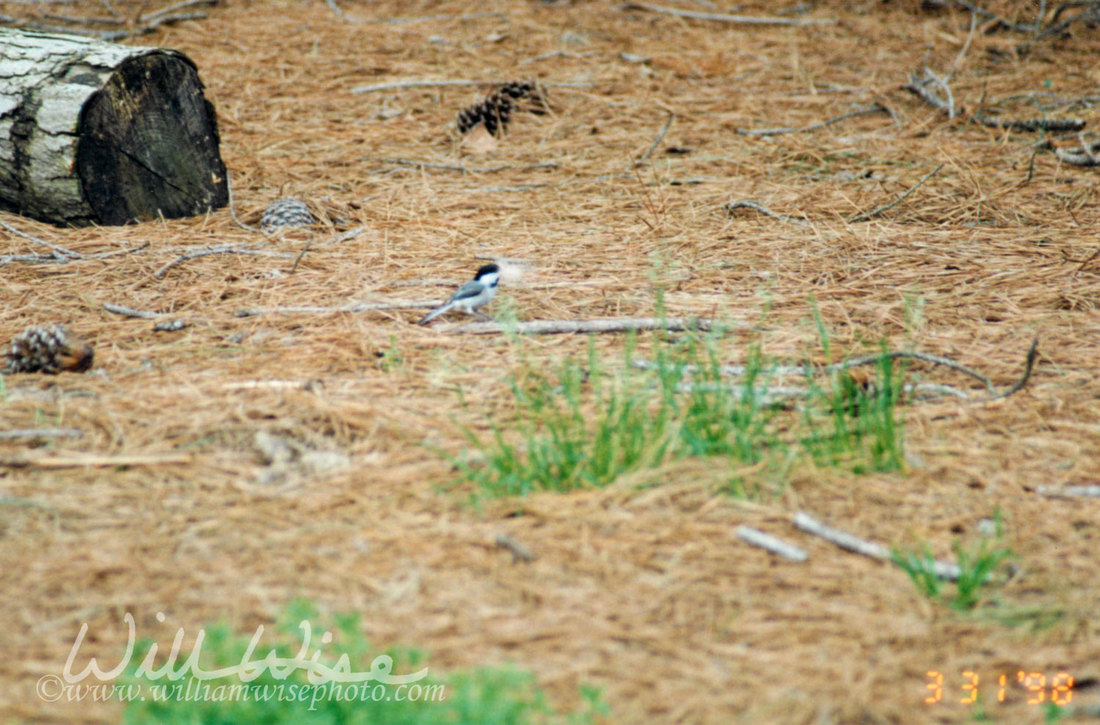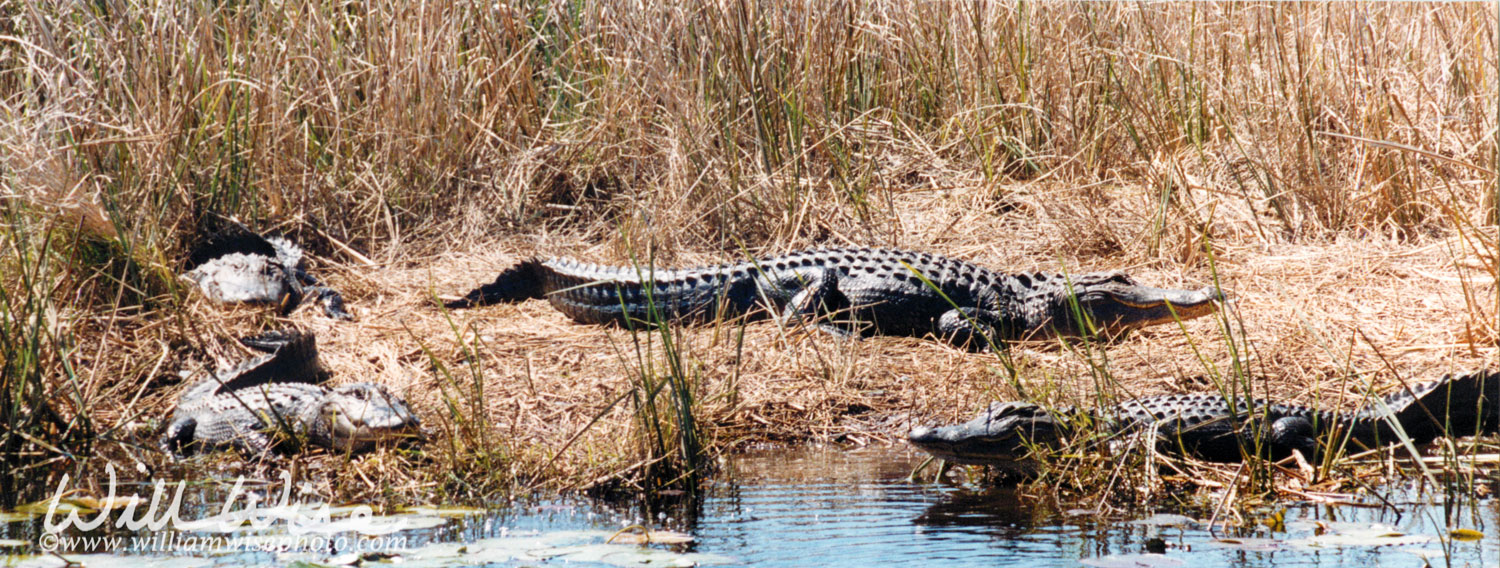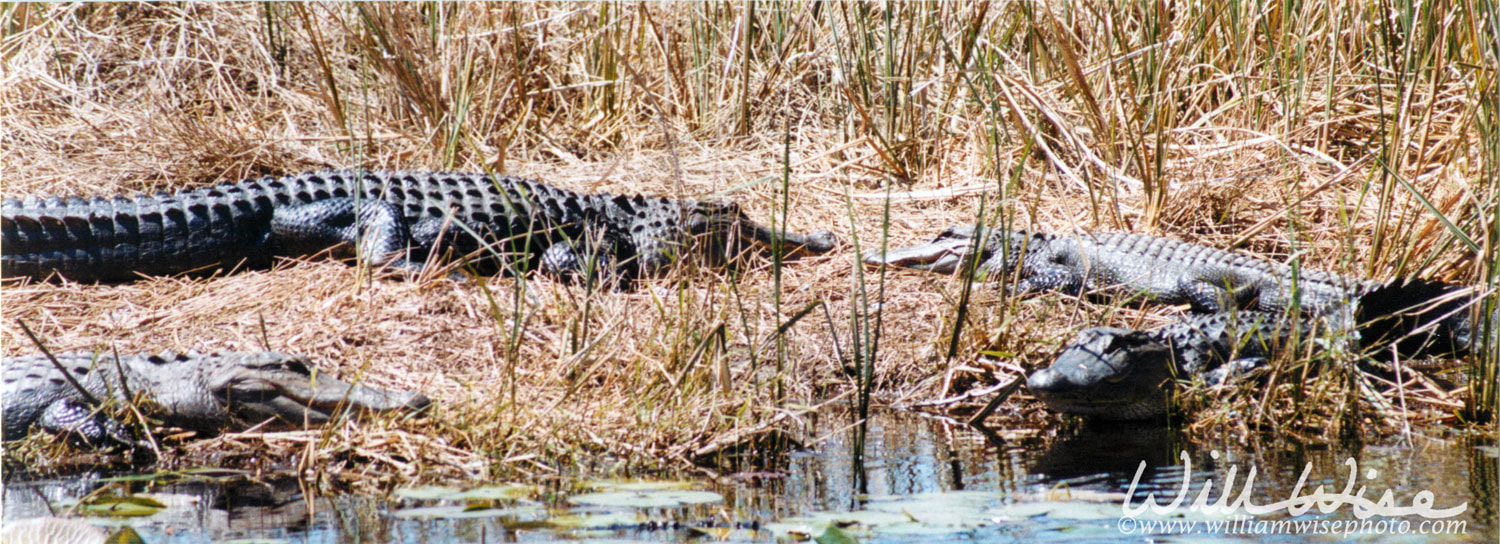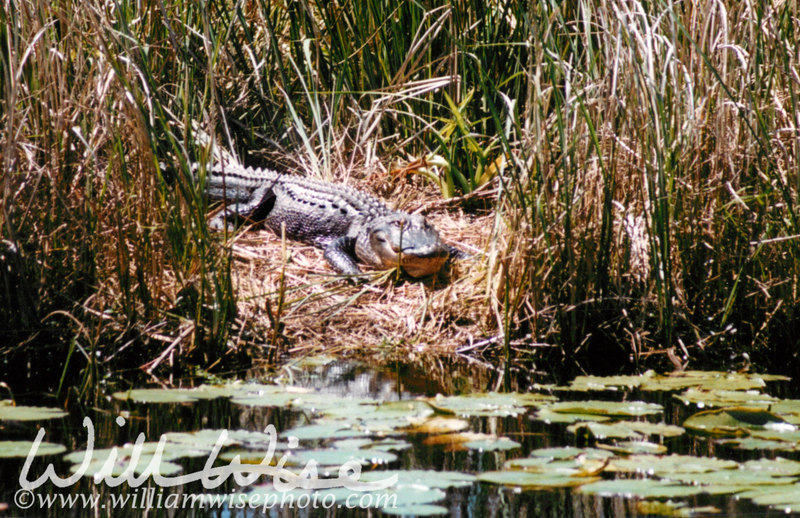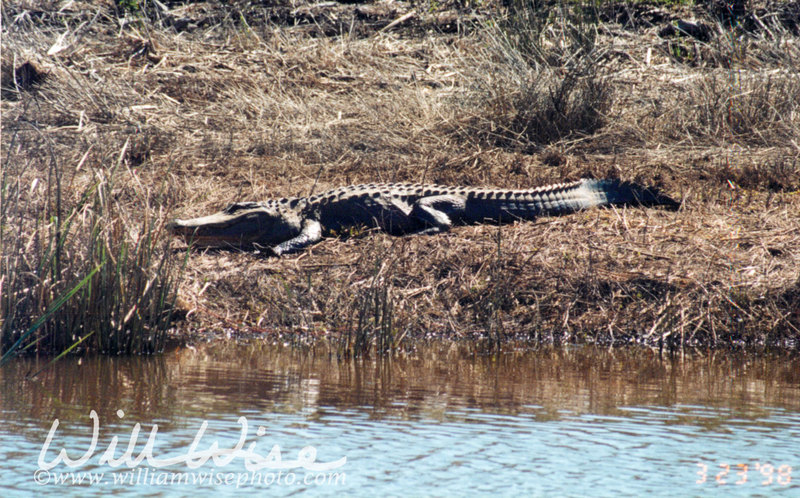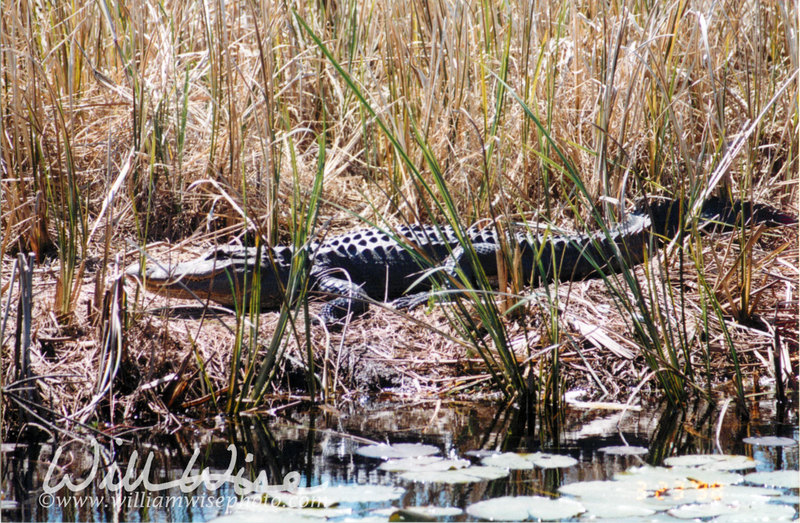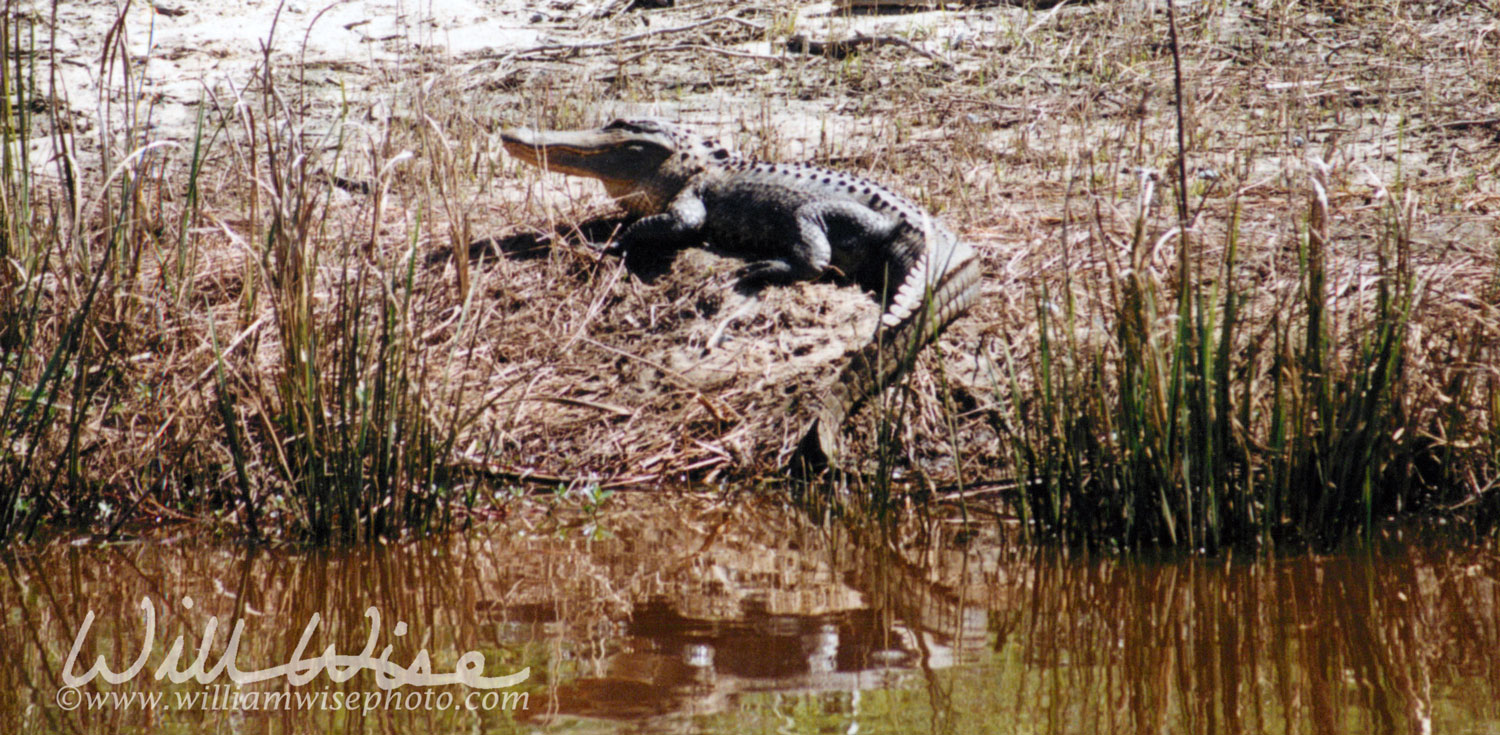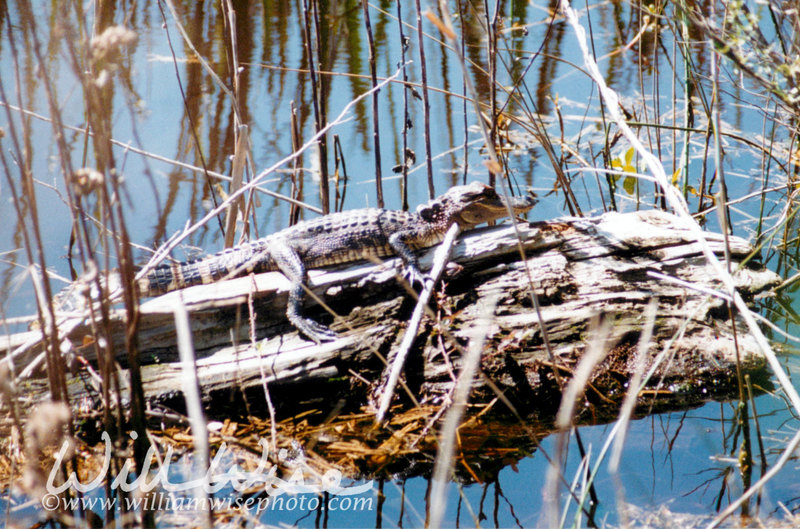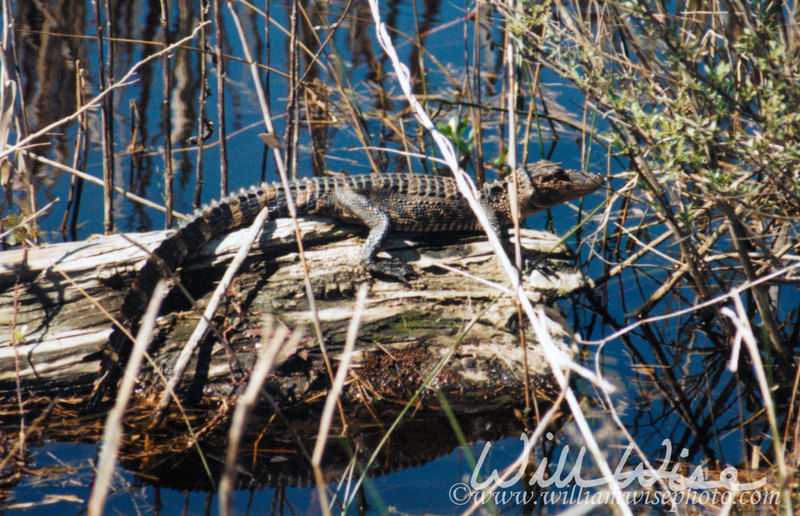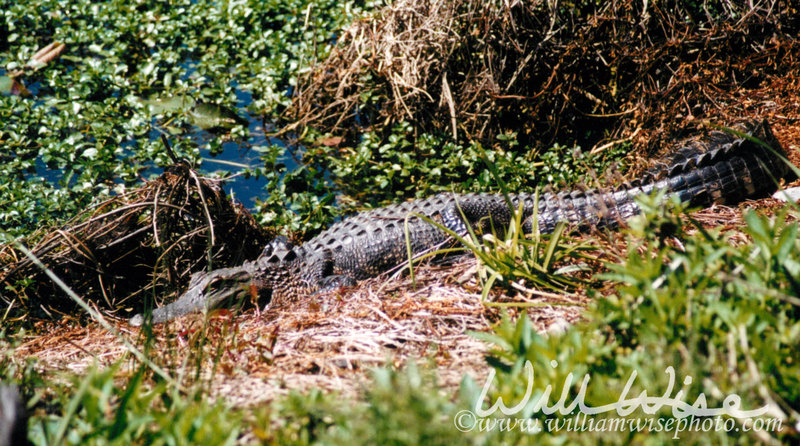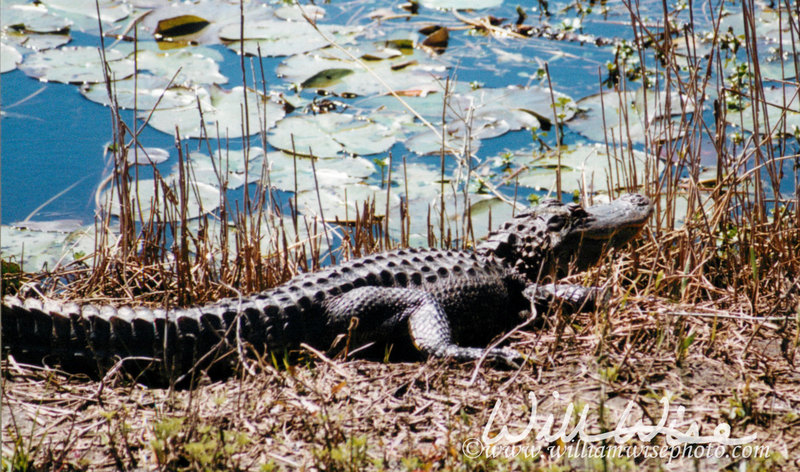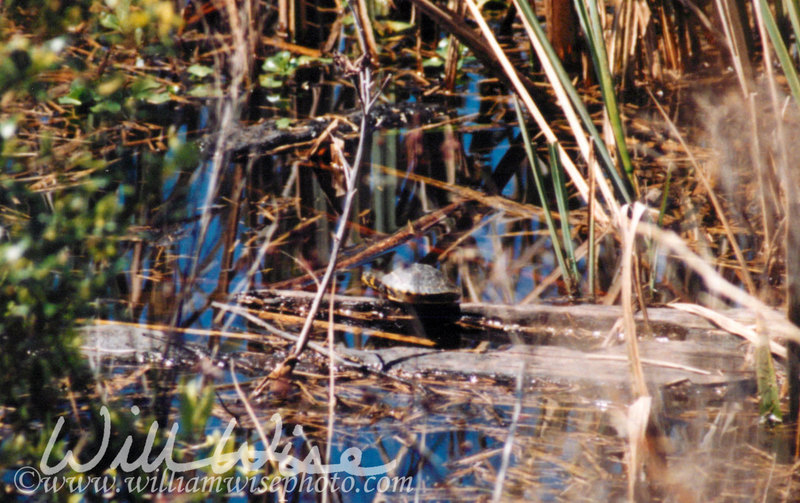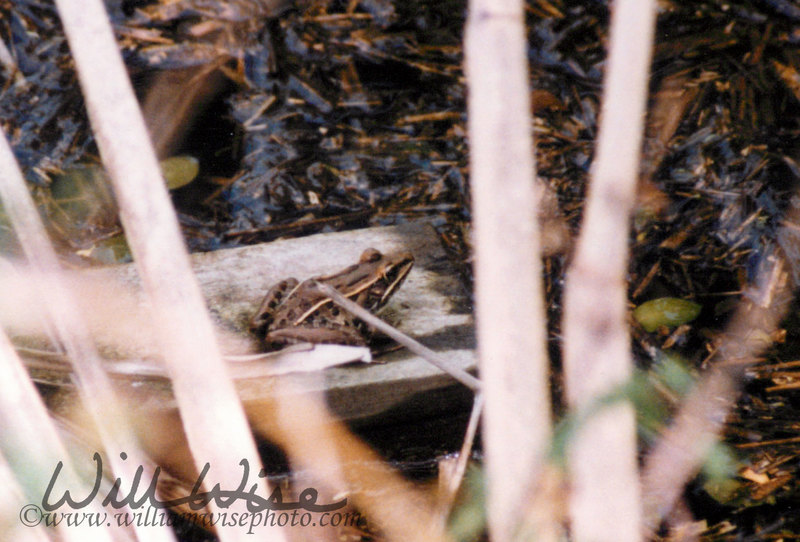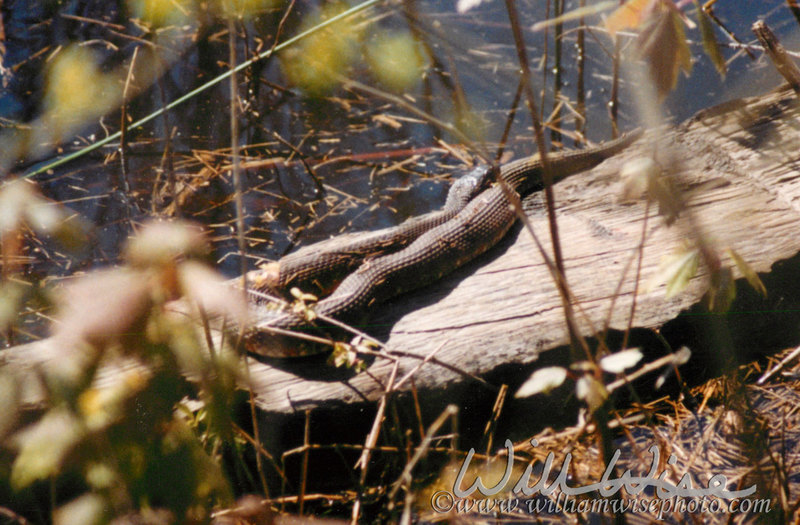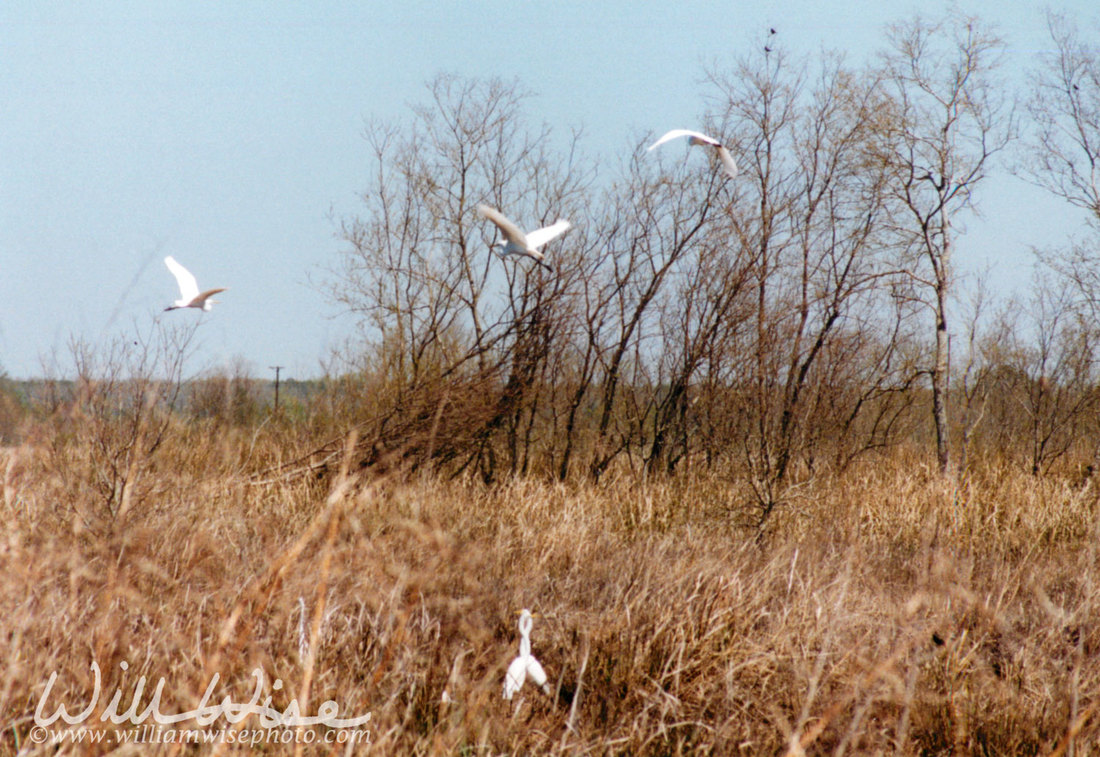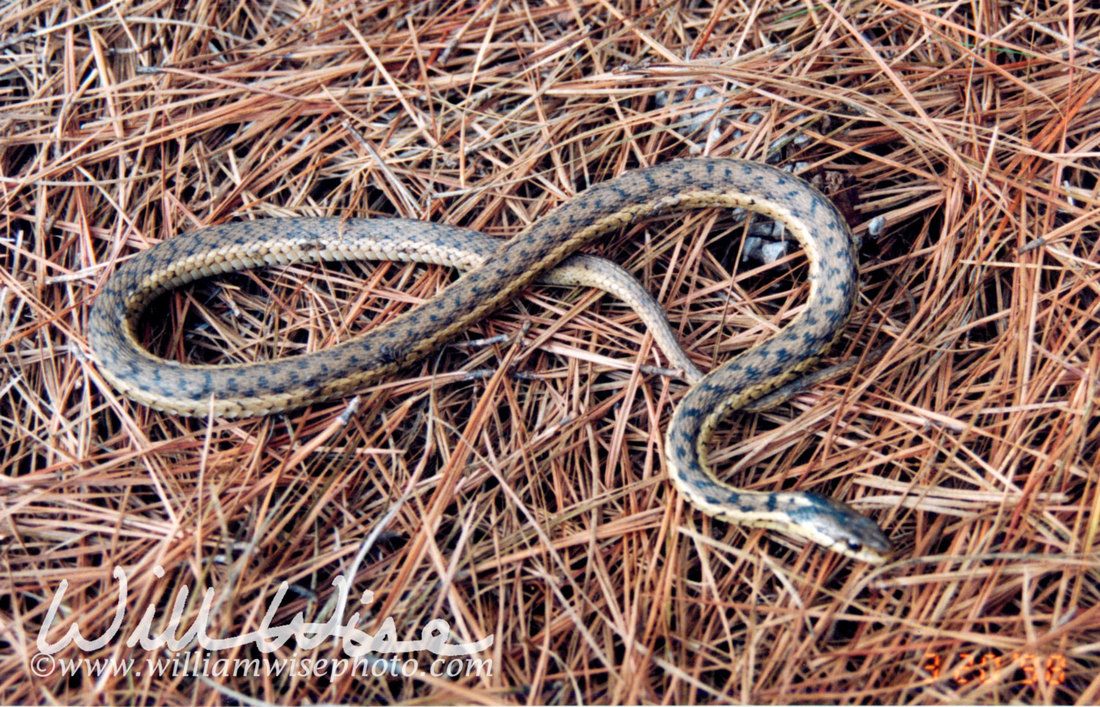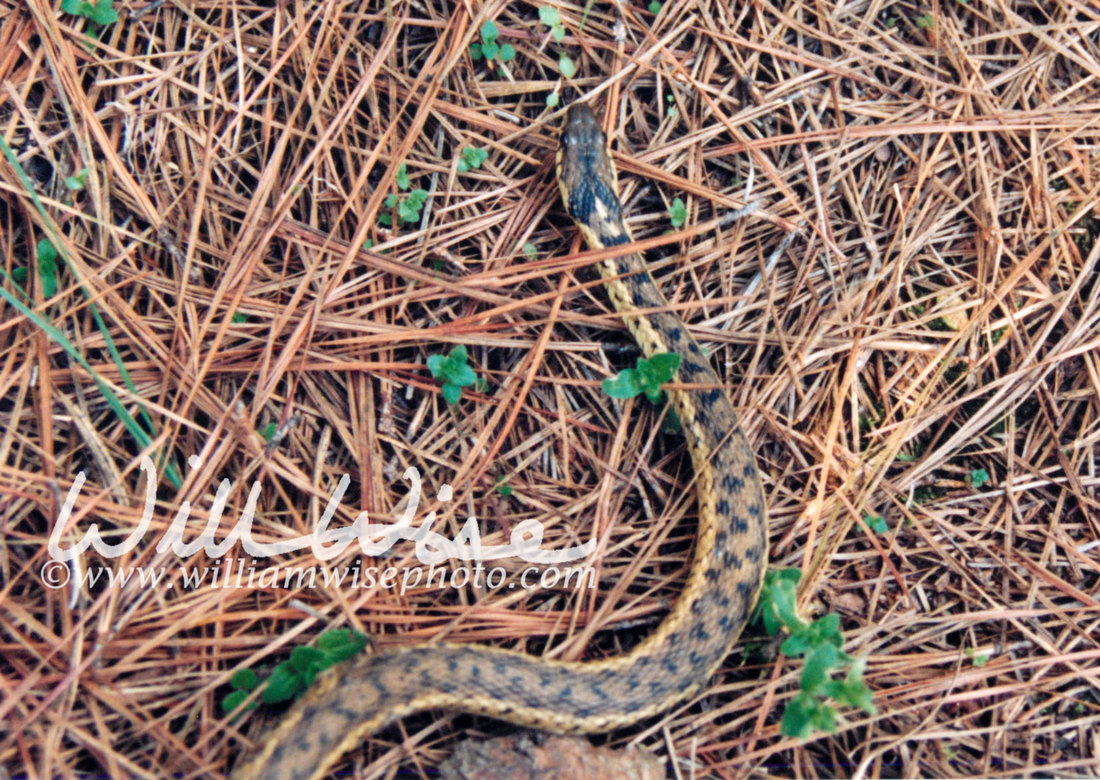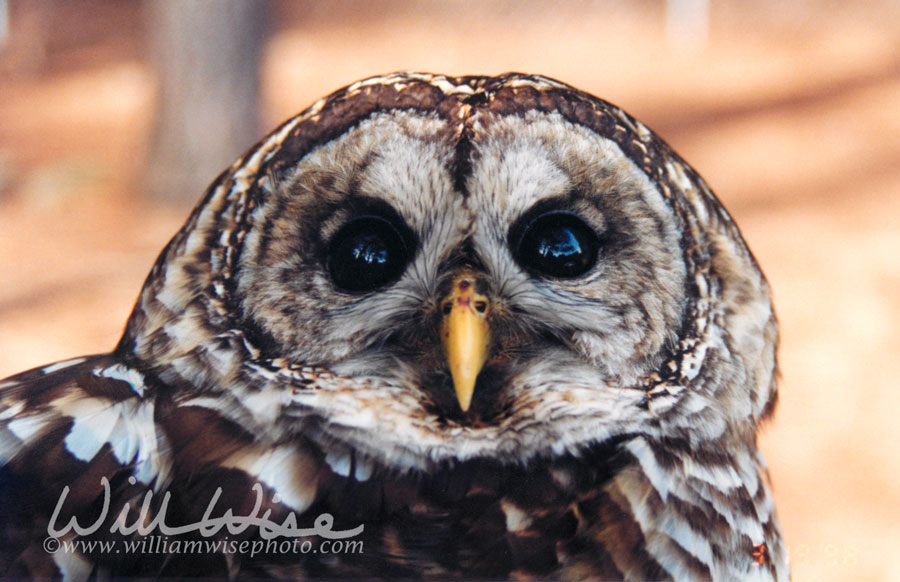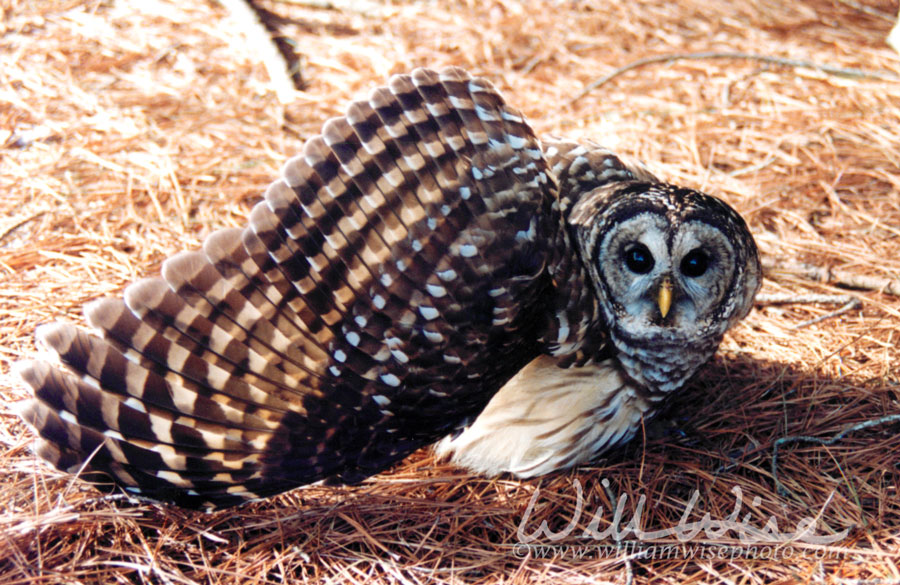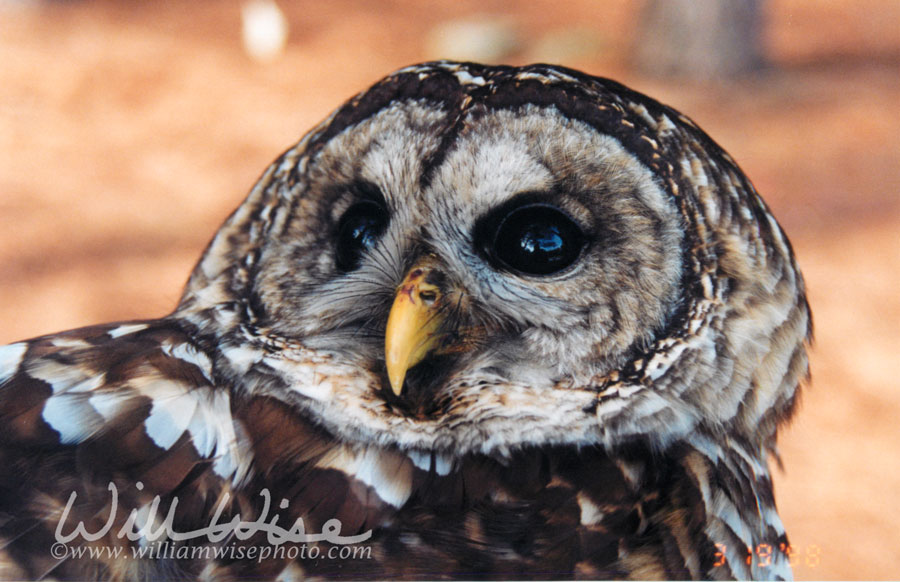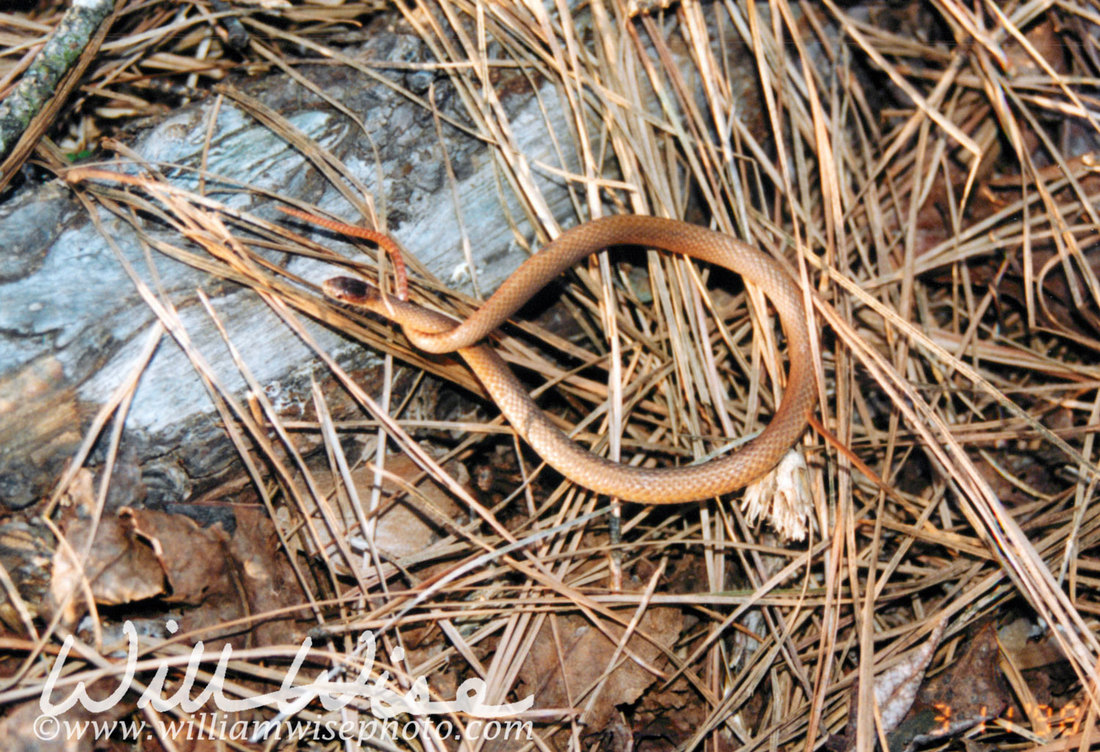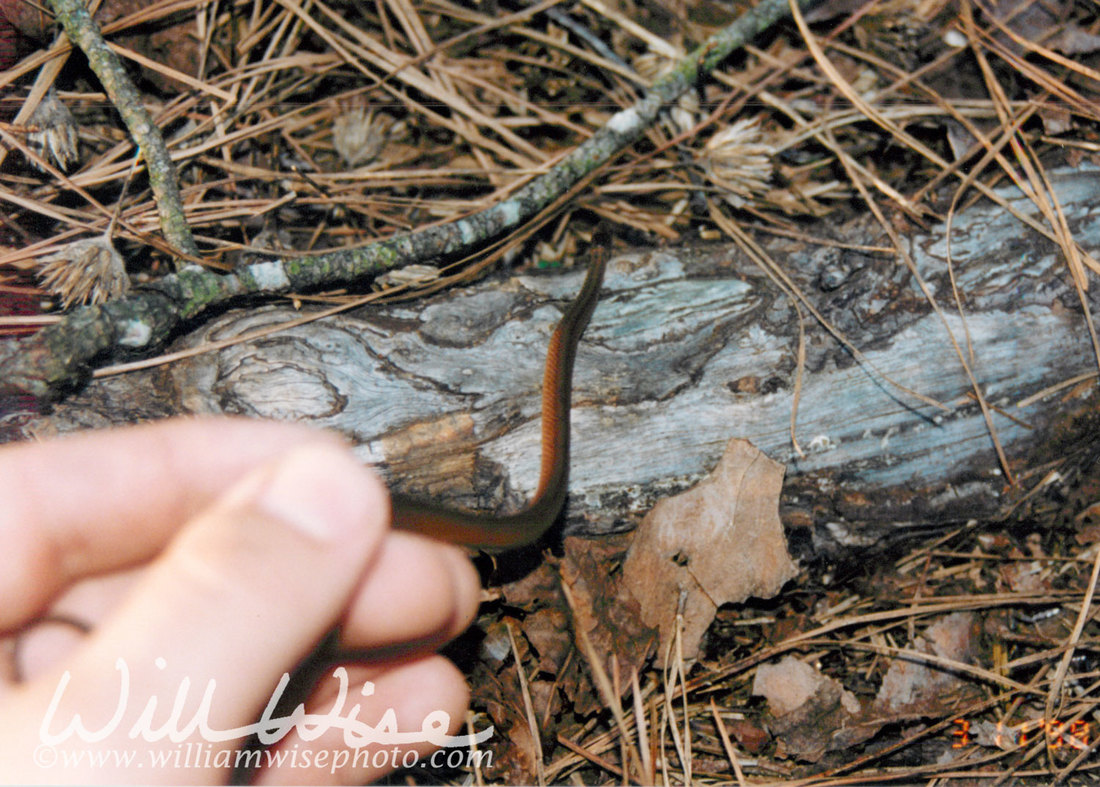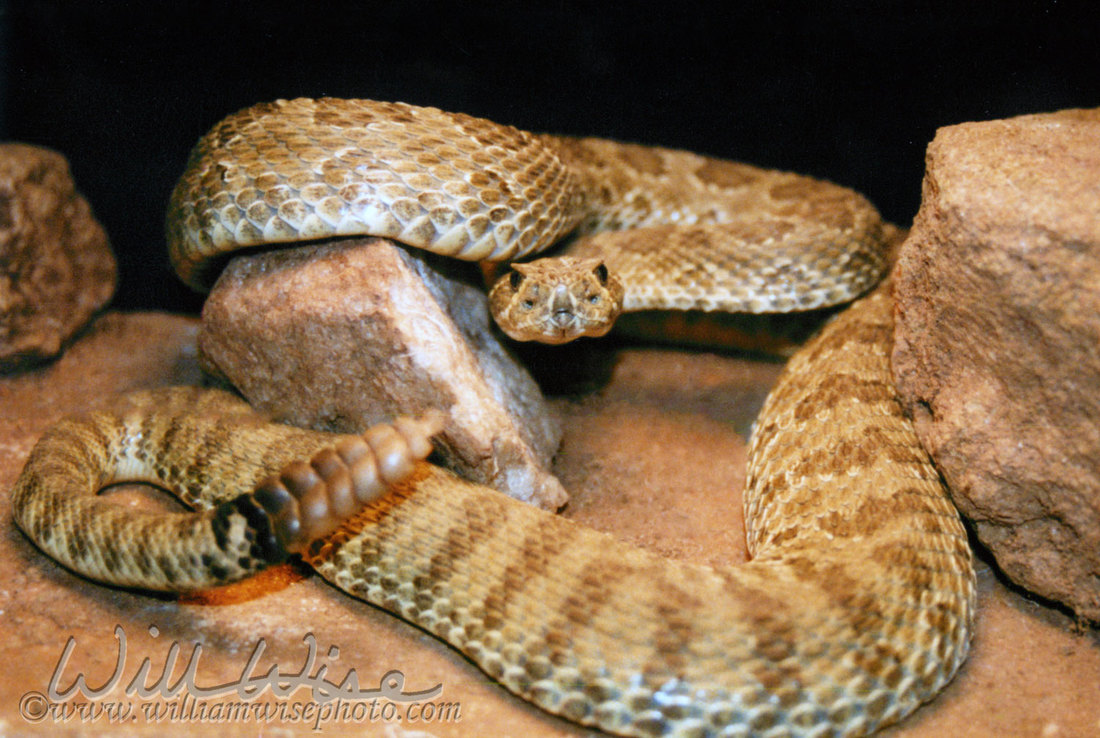 Captive Mojave Rattlesnake from my collection in the 1990's. The Mojave rattlesnake is considered one of the world's most venomous snakes. A subspecies of Mojave rattlesnake has a neurotoxic venom that is considered to be the most debilitating and potentially deadly of all rattlesnakes, and even matching several elapids (Cobra family). “Have you ever been bit?” is the question I frequently receive when people find out about the collection of 18 rattlesnakes I had in my apartment in the 1990’s. “Well yes, and no.” I reply. The truth is, I was bitten by a rattlesnake, but I wasn’t envenomated. The craziest snake in my collection was a Mojave Rattlesnake, Crotalus scutulatus. It was crazy in the fact that I dared to keep it! All the time I had this snake, it never calmed down. This rattler was always ready! Whenever you walked in the room, day or night, it was immediately up in arms, rattling away and striking at the glass. It was also crazy in how deadly this snake could be. Websites state: Crotalus scutulatus (common names: Mojave rattlesnake, Mojave green) is a highly venomous pit viper species found in the deserts of the southwestern United States and central Mexico. It is perhaps best known for its potent neurotoxic-hemotoxic venom, which is considered the world's most potent rattlesnake venom. A bite can produce vision abnormalities and difficulty swallowing and speaking. In severe cases, skeletal muscle weakness can lead to difficulty breathing and even respiratory failure. And of all places, his glass cage was right above my bed!
Most of the rattlesnakes in my collection were fairly docile and their cages could be spot cleaned while they lay in one corner. Not the Mojave! It was always a production to feed, move and clean him. I usually took him out of his cage using snake tongs, all the while he would rattle and strike, and placed him in a large plastic Rubbermaid box. One day I placed him in the box and threw in a mouse for him to eat while I cleaned his cage. As I lowered the plastic lid, he pin-point struck right at my hand and hit my pinky finger that was along the lip of the lid! I slammed the lid and looked at my finger. There was a small cut with a drop of blood. I knew I had been hit. I ran to the bathroom and began squeezing it, running it under water, sucking it and waited… and waited… and waited. After about five or ten minutes I called my friend. “If I had been envenomated, don’t you think I’d be feeling something by now?” As I calmed, I began to think more clearly about what had happened. Most of my hand was safely above the lid as I lowered it. Only my pinky was alongside the lip of the box lid and must have protruded just a tad below the lip. I believe that when the snake struck, his fangs hit the lip of the lid. It was his bottom teeth, which don’t inject venom, that grazed my pinky, causing the small slice as he recoiled back. All that saved me from a bite from one of the potentially most deadly rattlesnakes was a lip of plastic about a centimeter wide! Thank you, Jesus!
0 Comments
As my fascination with native reptiles waxed, I knew I would one day be adding a rattlesnake to my collection. But trying to ease into the realm of venomous reptiles, also know by collectors at ‘hot herps’, I decided to begin with baby steps by obtaining some less deadly serpents. On our drive back from Tucson in 1994, we stopped in Lubbock, Texas and I bought a trio of Trans-pecos Copperheads from a collector there. One guy in the car, our friend Kerry, wasn’t too thrilled with sharing the next 12 hours in the backseat with them! I don’t think he slept at all and kept his eyes fixed on their plastic shoeboxes. My first rattlesnake was added to my collection by swapping one of the Trans-pecos Copperheads for a young Canebrake Rattlesnake with a friend that worked at the local nature center. This Canebrake became my favorite snake; my pride and joy. He would never refuse food and frequently got the mice the other snakes didn’t eat. He grew quickly and was four feet long and as big around as my arm when I finally gave him away to a friend. Over the few years of keeping venomous reptiles, the rattlesnakes were my favorite. My goal was to have at least one of every North American species of rattlesnake. I came pretty close, but eventually sold off the collection around 1999 before reaching my goal. All in all, I had 18 venomous snakes in my apartment. I did make one sad mistake. In my desperation to have an Eastern Diamondback Rattlesnake, I bought three wild-caught adults from a "zoo" down in Florida. I tried everything to get them to eat, but they just would not feed in captivity. I watched them waste away and eventually die. Looking back, I wish I had driven back down to Florida to release them. Even with all that handling, cleaning and feeding, I only had one close call, and that is a story of its own: the Mojave Green Rattlesnake!
A friend, co-worker, and fellow reptile enthusiast of mine in the late nineties kept quite a grand collection of large pythons. I was frequently at his house to help him move, clean and feed these giants beasts. In fact, we converted an entire room in his duplex into a python cage, replacing the door with a glass door. The biggest of these pythons age buck rabbits the size of small dogs.
March 31, 1998 – I have no recollection of why I took this photo other than the bird was just there, but I do remember it was out behind the Athens-Clarke County Animal Control shelter where I was employed at the time. No matter the reason, it stands the oldest existing photograph I have of a Carolina Chickadee.
What a wildly wonderful world, God! You made it all, with Wisdom at your side, made earth overflow with your wonderful creations. Psalms 104 The Message My second trip to the Savannah National Wildlife Refuge. We primarily stayed on the Laurel Hill Wildlife Drive. The drive in the SNWR is a great way to see alligators and wildlife up close, especially for those who love outdoors but may not be able to trudge through swamps and marshes. The four-mile drive follows the checkerboard levees of an old rice plantation. In the warming spring months and early summer mornings, there are alligators on every bank around every turn; even multiple “big ones” sunning together in one spot. SNWR was a favorite spot to "reptile hunt" in my college days.
"For everything, absolutely everything, above and below, visible and invisible ... everything got started in him and finds its purpose in him." Colossians. 1:16 Another animal control critter caught in someone's house in 1998.
Psalm 143:5 I remember the days of old. I ponder all your great works and think about what you have done. Flashback to the days of film: March 18, 1998.
While working with Athens-Clarke County Animal Control in 1998, I was called out to assist and owl that couldn’t fly. It appeared to be a fledgling that just hadn’t quite yet figured it out. While getting his photos, he unfurled his wings in what I assume is a defensive posture to make himself look larger and less edible! I also remember all these years later (20 in fact) how he repeatedly clucked his beak at me. Isaiah 65:18 -- But be glad and rejoice forever in what I create Storeria occipitomaculata, commonly known as the redbelly snake, is a species of snake endemic to North America. This species can be found in a variety of woodland habitats but in the Coastal Plain is most common in or around the margins of small wetlands. In the Mountains they are often found in open habitats such as fields and mountain balds. Redbellied snakes are generally very secretive and can be found hiding under logs, rocks, and leaf piles. They feed nearly exclusively on slugs.
|
Categories
All
Archives
September 2025
|
|
All content is ©williamwisephoto.com. Please don't steal images. My images are available at dreamstime.com. Stock sales go into the shelter photography program.
|
In December 1993 I came to know the Designer and Creator of this wonderful planet and its creatures: Jesus Christ.
|
Donations help support the animal shelter adoption photography equipment and adoption website hosting and domain fees. Thanks for your support!
|
